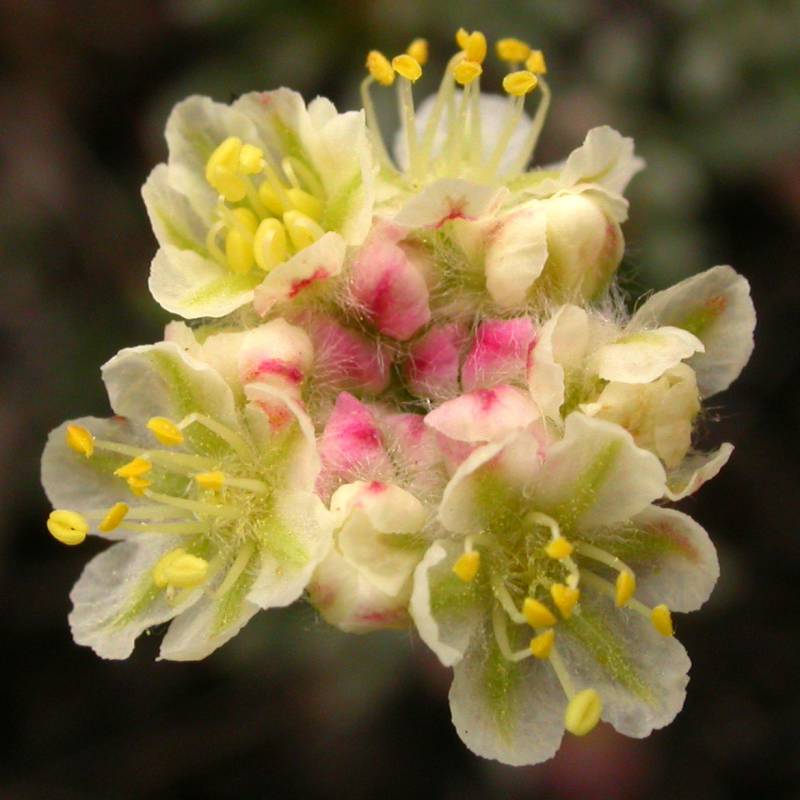Eriogonum thymoides
Eriogonum ripleyi
thyme buckwheat, thyme-leaf wild buckwheat
Leaves many, linear to linear-spatulate, 3-10 mm. long, usually revolute, somewhat wooly beneath and silky above.
Flowering stems 3-8 cm. tall, always with a whorl of leaves about mid-length;
involucres single and terminal, top-shaped, 3-5 mm. long, the teeth 6-8, erect, triangular, 1 mm. long;
perianth with a stipitate base 0.5-1 mm. long, densely hairy, the 6 segments obovate, yellow or white to rose-red, 4-6 mm. long; plants dioecious, the staminate flowers with 9 stamens, the filaments hairs only at the base, the pistillate flowers with stout, spreading styles 0.5-1 mm. long.
Achenes pubescent above
Eriogonum thymoides
Eriogonum ripleyi
Occurring east of the Cascades crest in central Washington; central Washington to Oregon, east to Idaho.


